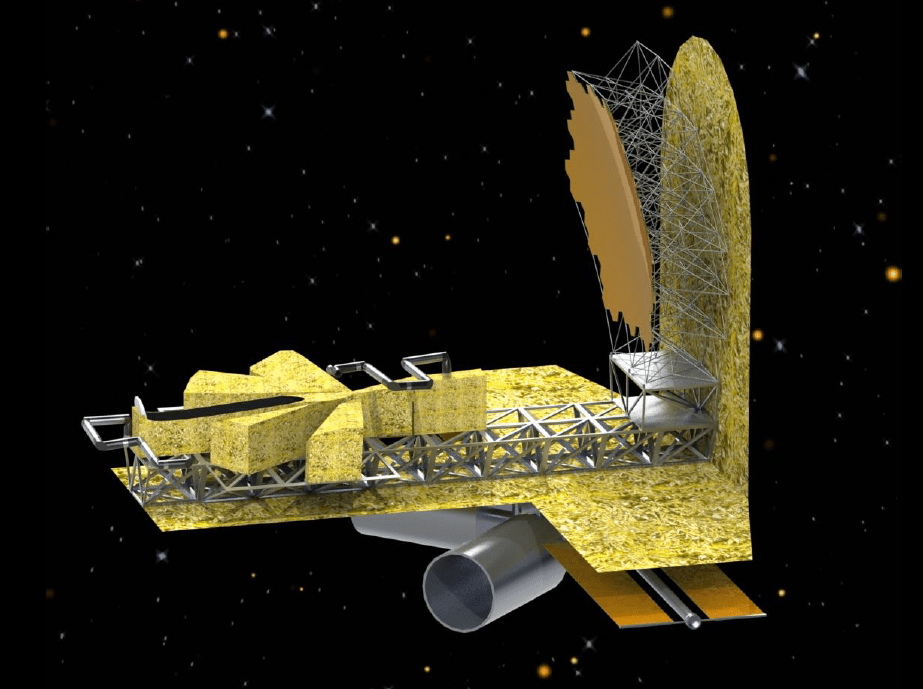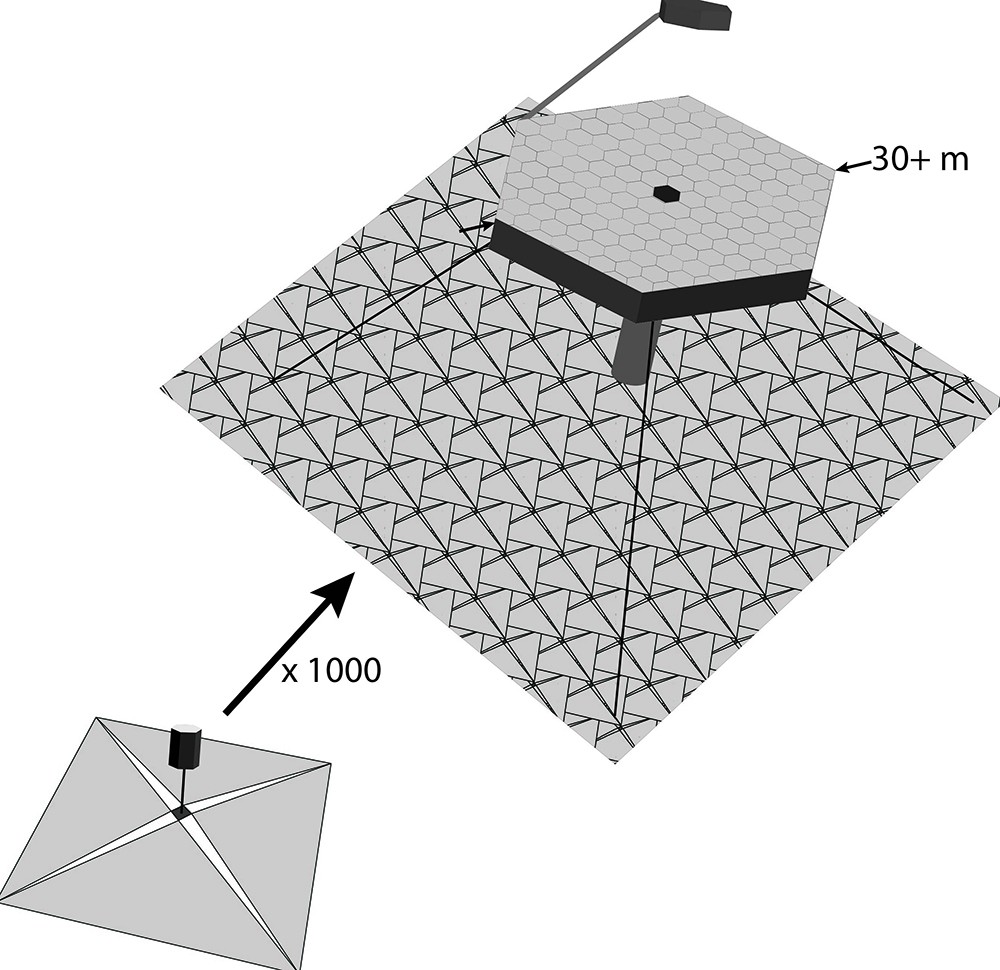NASA’s Spitzer Space Telescope has reached the end of its life. Its mission was to study objects in the infrared, and it excelled at that since it was launched in 2003. But every mission has an end, and on January 30th 2020, Spitzer shut down.
Continue reading “Good-bye Spitzer. We’ll Miss You But We Won’t Forget You.”It Looks Like James Webb’s Launch Date is Going to Slip to July 2021

Put “James Webb Telescope launch” into your search engine and you’ll be flooded with links, some reaching back to the ‘scope’s first proposed launch date in 2010. The delayed launch of the space telescope is a running theme in the space community, even though we all know it’s going to be worth the wait. So nobody will be surprised by this latest development in the story of the world’s most anticipated telescope.
Continue reading “It Looks Like James Webb’s Launch Date is Going to Slip to July 2021”Building Space Telescopes… In Space
When it comes to telescopes, bigger is better. That’s true down here on Earth, and it’s especially true out in space. As astronomers and engineers design the next generation of giant space telescopes, they’re running up against the limits of current launch providers. There are only so many ways you can fold a huge telescope to get it to fit inside a 5-meter launch fairing.
Continue reading “Building Space Telescopes… In Space”WFIRST Gets its Coronagraph, to Block the Light of Stars and Reveal Their Planets
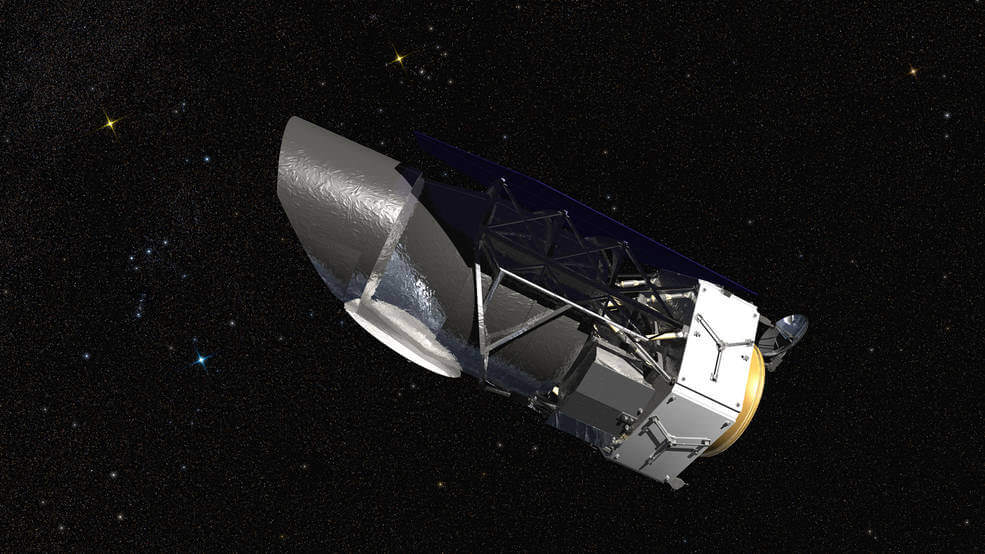
In the next decade, NASA will be sending some truly impressive facilities to space. These include the next-generation space telescopes like the James Webb Space Telescope (JWST) and the Wide-Field Infrared Space Telescope (WFIRST). Building on the foundation established by Hubble, WFIRST will use its advanced suite of instruments to investigate some of the deepest mysteries of the Universe.
One of these instruments is the coronagraph that will allow the telescope to get a clear look at extra-solar planets. This instrument recently completed a preliminary design review conducted by NASA, a major milestone in its development. This means that the instrument has met all design, schedule and budget requirements, and can now proceed to the next phase in development.
Continue reading “WFIRST Gets its Coronagraph, to Block the Light of Stars and Reveal Their Planets”NASA is Investigating a Self-Assembling Space Telescope
NASA has some pretty advanced concepts in mind when it comes to the next generation of space telescopes. These include the Transiting Exoplanet Survey Satellite (TESS), which recently took to space, as well as the James Webb Space Telescope (JWST) (scheduled to launch in 2020) and the Wide-Field Infrared Survey Telescope (WFIRST), which is still in development.
Beyond these, NASA has also identified several promising proposals as part of its 2020 Decadal Survey for Astrophysics. But perhaps the most ambitious concept is one that calls for a space telescope made up of modules that would assemble themselves. This concept was recently selected for Phase I development as part of the 2018 NASA Innovative Advanced Concepts (NIAC) program.
The team behind this concept is led by Dmitri Savransky, an assistant professor of mechanical and aerospace engineering at Cornell University. Along with 15 colleagues from across the US, Savransky has produced a concept for a ~30 meter (100 foot) modular space telescope with adaptive optics. But the real kicker is the fact that it would be made up of a swarm of modules that would assemble themselves autonomously.

Prof. Savransky is well-versed in space telescopes and exoplanet hunting, having assisted in the integration and testing of the Gemini Planet Imager – an instrument on the Gemini South Telescope in Chile. He also participated in the planning of the Gemini Planet Imager Exoplanet Survey, which discovered a Jupiter-like planet orbiting 51 Eridani (51 Eridani b) in 2015.
But looking to the future, Prof. Savransky believes that self-assembly is the way to go to create a super telescope. As he and his team described the telescope in their proposal:
“The entire structure of the telescope, including the primary and secondary mirrors, secondary support structure and planar sunshield will be constructed from a single, mass-produced spacecraft module. Each module will be composed of a hexagonal ~1 m diameter spacecraft topped with an edge-to-edge, active mirror assembly.”
These modules would be launched independently and then navigate to the Sun-Earth L2 point using deployable solar sails. These sails will then become the planar telescope sunshield once the modules come together and assemble themselves, without the need for human or robotic assistance. While this may sound radically advanced, it is certainly in keeping with what the NIAC looks for.
“That’s what the NIAC program is,” said Dr. Savransky in recent interview with the Cornell Chronicle. “You pitch these somewhat crazy-sounding ideas, but then try to back them up with a few initial calculations, and then it’s a nine-month project where you’re trying to answer feasibility questions.”
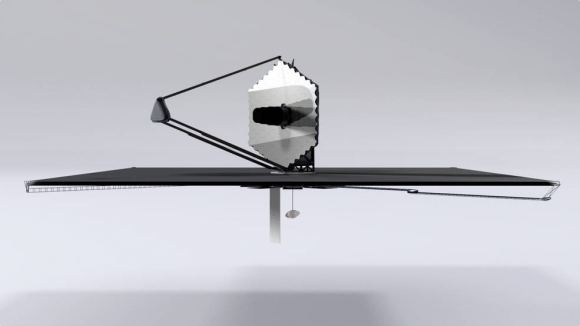
As part of the 2018 NAIC’s Phase I awards, which were announced on March 30th, the team was awarded $125,000 over a nine month period to conduct these studies. If these are successful, the team will be able to apply for a Phase II award. As Mason Peck, an associate professor of mechanical and aerospace engineering at Cornell and the former chief technology officer at NASA, indicated, Savransky is on the right track with his NIAC proposal:
“As autonomous spacecraft become more common, and as we continue to improve how we build very small spacecraft, it makes a lot of sense to ask Savransky’s question: Is it possible to build a space telescope that can see farther, and better, using only inexpensive small components that self-assemble in orbit?”
The target mission for this concept is the Large Ultraviolet/Optical/Infrared Surveyor (LUVOIR), a proposal that is currently being explored as part of NASA’s 2020 Decadal Survey. As one of two concepts being investigated by NASA’s Goddard Space Flight Center, this mission concept calls for a space telescope with a massive segmented primary mirror that measures about 15 meters (49 feet) in diameter.
Much like the JWST, LUVOIR’s mirror would be made up of adjustable segments that would unfold once it deployed to space. Actuators and motors would actively adjust and align these segments in order to achieve the perfect focus and capture light from faint and distant objects. The primary aim of this mission would be to discover new exoplanets as well as analyze light from those that have already been discovered to asses their atmospheres.
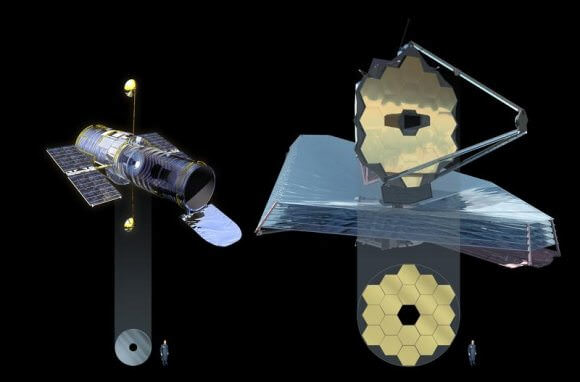
As Savransky and his colleagues indicated in their proposal, their concept is directly in line with the priorities of the NASA Technology Roadmaps in Science Instruments, Observatories, and Sensor Systems and Robotics and Autonomous Systems. They also state that the architecture is a credible means to construct a giant space telescope, which would not be possible for previous generations of telescopes like Hubble and the JWST.
“James Webb is going to be the largest astrophysical observatory we’ve ever put in space, and it’s incredibly difficult,” he said. “So going up in scale, to 10 meters or 12 meters or potentially even 30 meters, it seems almost impossible to conceive how you would build those telescopes the same way we’ve been building them.”
Having been granted a Phase I award, the team is planning to conduct detailed simulations of how the modules would fly through space and rendezvous with each other to determine how large the solar sails need to be. They also plan to conduct an analysis of the mirror assembly to validate that the modules could achieve the required surface figure once assembled.
As Peck indicated, if successful, Dr. Savransky’s proposal could be a game changer:
“If Professor Savransky proves the feasibility of creating a large space telescope from tiny pieces, he’ll change how we explore space. We’ll be able to afford to see farther, and better than ever – maybe even to the surface of an extrasolar planet.”
On June 5th and 6th, NASA will also be conducting an NIAC Orientation Meeting in Washington D.C., where all the Phase I winners will have a chance to meet and discuss their ideas. Other proposals that received a Phase I award include shape-shifting robots for exploring Titan, lightweight aerial sensors to explore Venus’ atmosphere, flapping-wing swarm robots to explore Mars, a new form of beam propulsion for interstellar missions (similar to Breakthrough Starshot), a steam-powered robot for ocean worlds, and a self-replicating habitat made from fungus.
You can read more about these concepts, as well as those that were given Phase II award, here.
Further Reading: Cornell Chronicle, NASA
Dream About the Future of Big Telescopes; Monster Space Telescopes That Could Fly by the 2030s
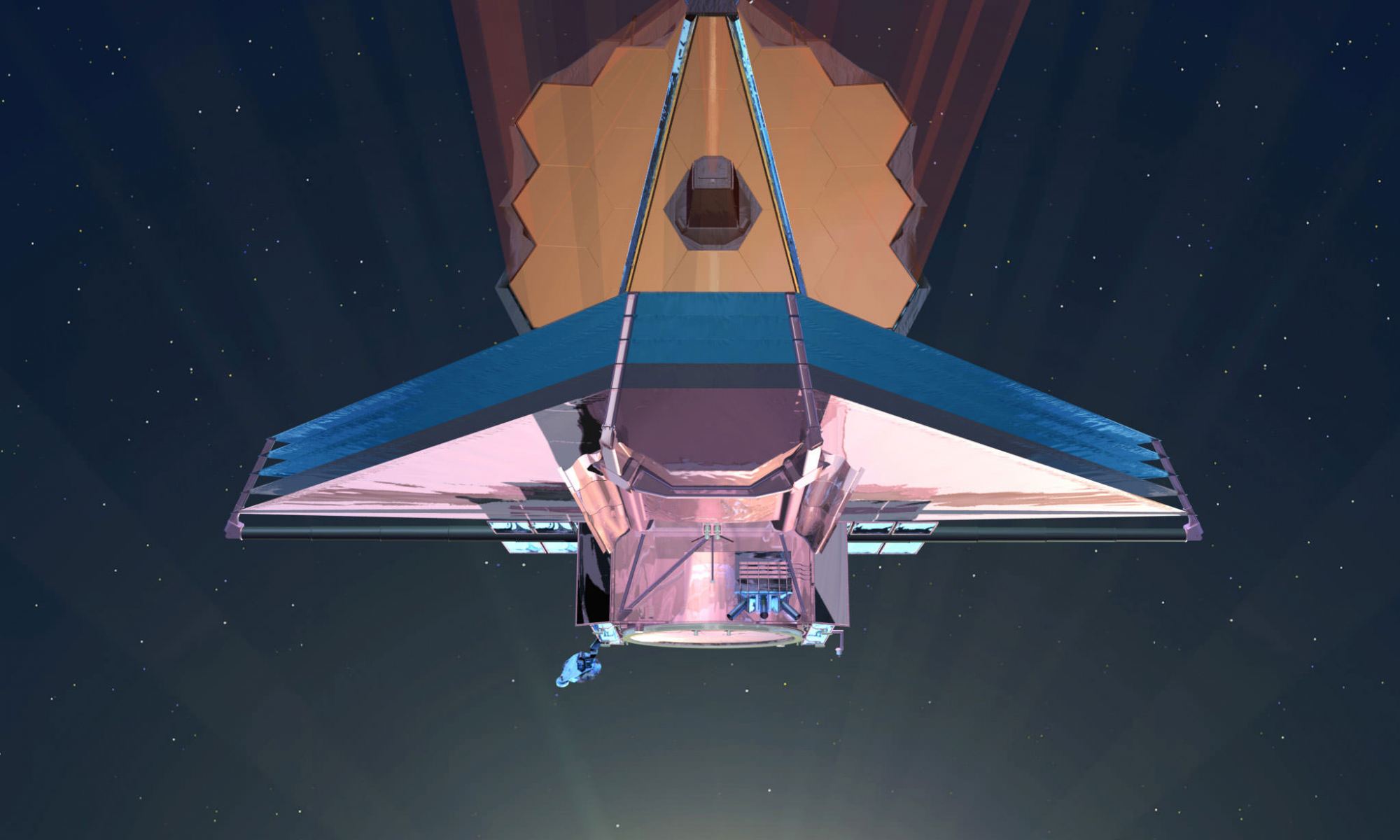
With the recent launch of the Transiting Exoplanet Survey Satellite (TESS) – which took place on Wednesday, April 18th, 2018 – a lot of attention has been focused on the next-generation space telescopes that will be taking to space in the coming years. These include not only the James Webb Space Telescope, which is currently scheduled for launch in 2020, but some other advanced spacecraft that will be deployed by the 2030s.
Such was the subject of the recent 2020 Decadal Survey for Astrophysics, which included four flagship mission concepts that are currently being studied. When these missions take to space, they will pick up where missions like Hubble, Kepler, Spitzer and Chandra left off, but will have greater sensitivity and capability. As such, they are expected to reveal a great deal more about our Universe and the secrets it holds.
As expected, the mission concepts submitted to the 2020 Decadal Survey cover a wide range of scientific goals – from observing distant black holes and the early Universe to investigating exoplanets around nearby stars and studying the bodies of the Solar System. These ideas were thoroughly vetted by the scientific community, and four have been selected as being worthy of pursuit.

As Susan Neff, the chief scientist of NASA’s Cosmic Origins Program, explained in a recent NASA press release:
“This is game time for astrophysics. We want to build all these concepts, but we don’t have the budget to do all four at the same time. The point of these decadal studies is to give members of the astrophysics community the best possible information as they decide which science to do first.”
The four selected concepts include the Large Ultraviolet/Optical/Infrared Surveyor (LUVOIR), a giant space observatory developed in the tradition of the Hubble Space Telescope. As one of two concepts being investigated by NASA’s Goddard Space Flight Center, this mission concept calls for a space telescope with a massive segmented primary mirror that measures about 15 meters (49 feet) in diameter.
In comparison, the JWST‘s (currently the most advanced space telescope) primary mirror measures 6.5 m (21 ft 4 in) in diameter. Much like the JWST, LUVOIR’s mirror would be made up of adjustable segments that would unfold once it deployed to space. Actuators and motors would actively adjust and align these segments in order to achieve the perfect focus and capture light from faint and distant objects.
With these advanced tools, LUVOIR would be able to directly image Earth-sized planets and assess their atmospheres. As Study Scientist Aki Roberge explained:
“This mission is ambitious, but finding out if there is life outside the solar system is the prize. All the technology tall poles are driven by this goal… Physical stability, plus active control on the primary mirror and an internal coronagraph (a device for blocking starlight) will result in picometer accuracy. It’s all about control.”
There’ also the Origins Space Telescope (OST), another concept being pursued by the Goddard Space Flight Center. Much like the Spitzer Space Telescope and the Herschel Space Observatory, this far-infrared observatory would offer 10,000 times more sensitivity than any preceding far-infrared telescope. Its goals include observing the farthest reaches of the universe, tracing the path of water through star and planet formation, and searching for signs of life in the atmospheres of exoplanets.
Its primary mirror, which would measure about 9 m (30 ft) in diameter, would be the first actively cooled telescope, keeping its mirror at a temperature of about 4 K (-269 °C; -452 °F) and its detectors at a temperature of 0.05 K. To achieve this, the OST team will rely on flying layers of sunshields, four cryocoolers, and a multi-stage continuous adiabatic demagnetization refrigerator (CADR).
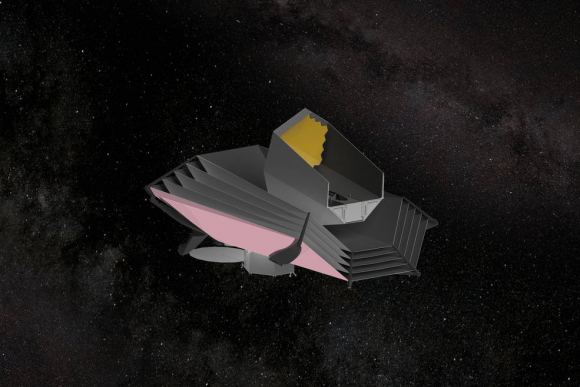
According to Dave Leisawitz, a Goddard scientist and OST study scientist, the OST is especially reliant on large arrays of superconducting detectors that measure in the millions of pixels. “When people ask about technology gaps in developing the Origins Space Telescope, I tell them the top three challenges are detectors, detectors, detectors,” he said. “It’s all about the detectors.”
Specifically, the OST would rely on two emerging types of detectors: Transition Edge Sensors (TESs) or Kinetic Inductance Detectors (KIDs). While still relatively new, TES detectors are quickly maturing and are currently being used in the HAWC+ instrument aboard NASA’s Stratospheric Observatory for Infrared Astronomy (SOFIA).
Then there’s the Habitable Exoplanet Imager (HabEx) which is being developed by NASA’s Jet Propulsion Laboratory. Like LUVOIR, this telescope would also directly image planetary systems to analyze the composition of planets’ atmospheres with a large segmented mirror. In addition, it would study the earliest epochs in the history of the Universe and the life cycle of the most massive stars, thus shedding light on how the elements that are necessary for life are formed.
Also like LUVOIR, HabEx would be able to conduct studies in the ultraviolet, optical and near-infrared wavelengths, and be able to block out a parent star’s brightness so that it could see light being reflected off of any planets orbiting it. As Neil Zimmerman, a NASA expert in the field of coronagraphy, explained:
“To directly image a planet orbiting a nearby star, we must overcome a tremendous barrier in dynamic range: the overwhelming brightness of the star against the dim reflection of starlight off the planet, with only a tiny angle separating the two. There is no off-the-shelf solution to this problem because it is so unlike any other challenge in observational astronomy.”
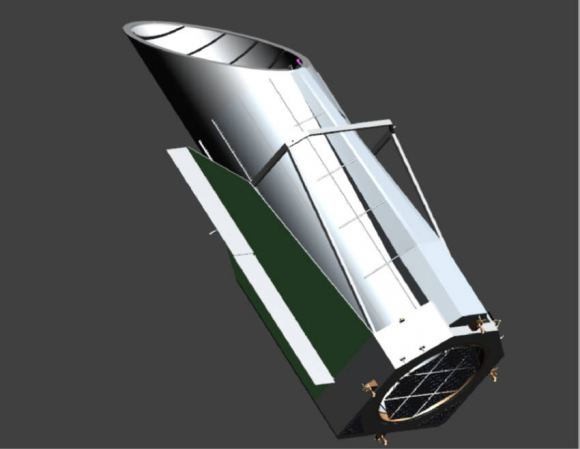
To address this challenge, the HabEx team is considering two approaches, which include external petal-shaped star shades that block light and internal coronagraphs that prevent starlight from reaching the detectors. Another possibility being investigated is to apply carbon nanotubes onto the coronagraphic masks to modify the patterns of any diffracted light that still gets through.
Last, but not least, is the X-ray Surveyor known as Lynx being developed by the Marshall Space Flight Center. Of the four space telescopes, Lynx is the only concept which will examine the Universe in X-rays. Using an X-ray microcalorimeter imaging spectrometer, this space telescope will detect X-rays coming from Supermassive Black Holes (SMBHs) at the center of the earliest galaxies in the Universe.
This technique consists of X-ray photos hitting a detector’s absorders and converting their energy to heat, which is measured by a thermometer. In this way, Lynx will help astronomers unlock how the earliest SMBHs formed. As Rob Petre, a Lynx study member at Goddard, described the mission:
“Supermassive black holes have been observed to exist much earlier in the universe than our current theories predict. We don’t understand how such massive objects formed so soon after the time when the first stars could have formed. We need an X-ray telescope to see the very first supermassive black holes, in order to provide the input for theories about how they might have formed.”
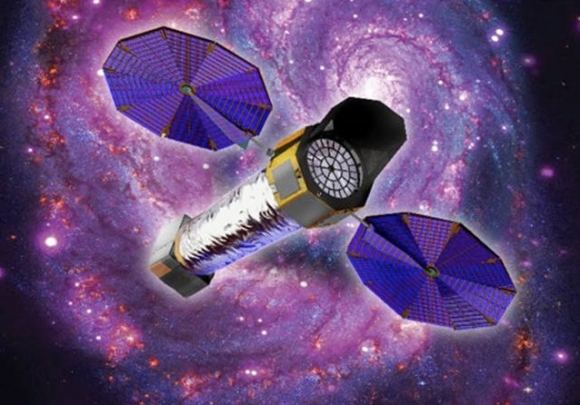
Regardless of which mission NASA ultimately selects, the agency and individual centers have begun investing in advanced tools to pursue such concepts in the future. The four teams submitted their interim reports back in March. By next year, they are expected to finish final reports for the National Research Council (NRC), which will be used to inform its recommendations to NASA in the coming years.
As Thai Pham, the technology development manager for NASA’s Astrophysics Program Office, indicated:
“I’m not saying it will be easy. It won’t be. These are ambitious missions, with significant technical challenges, many of which overlap and apply to all. The good news is that the groundwork is being laid now.”
With TESS now deployed and the JWST scheduled to launch by 2020, the lessons learned in the next few years will certainly be incorporated into these missions. At present, it is not clear which of the following concepts will be going to space by the 2030s. However, between their advanced instruments and the lessons learned from past missions, we can expect that they will make some profound discoveries about the Universe.
Rise of the Super Telescopes: The Large UV Optical Infrared Surveyor (LUVOIR) aka Hubble 2.0
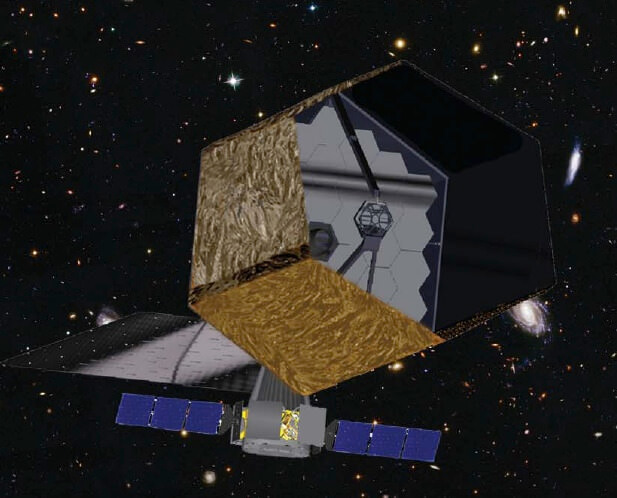
We humans have an insatiable hunger to understand the Universe. As Carl Sagan said, “Understanding is Ecstasy.” But to understand the Universe, we need better and better ways to observe it. And that means one thing: big, huge, enormous telescopes.
In this series we’ll look at the world’s upcoming Super Telescopes:
- The Giant Magellan Telescope
- The Overwhelmingly Large Telescope
- The 30 Meter Telescope
- The European Extremely Large Telescope
- The Large Synoptic Survey Telescope
- The James Webb Space Telescope
- The Wide Field Infrared Survey Telescope
- The Large UV Optical Infrared Surveyor (LUVOIR)
The Large UV Optical Infrared Surveyor Telescope (LUVOIR)
There’s a whole generation of people who grew up with images from the Hubble Space Telescope. Not just in magazines, but on the internet, and on YouTube. But within another generation or two, the Hubble itself will seem quaint, and watershed events of our times, like the Moon Landing, will be just black and white relics of an impossibly distant time. The next generations will be fed a steady diet of images and discoveries stemming from the Super Telescopes. And the LUVOIR will be front and centre among those ‘scopes.
If you haven’t yet heard of LUVOIR, it’s understandable; LUVOIR is in the early stages of being defined and designed. But LUVOIR represents the next generation of space telescopes, and its power will dwarf that of its predecessor, the Hubble.
LUVOIR (its temporary name) will be a space telescope, and it will do its work at the LaGrange 2 point, the same place that JWST will be. L2 is a natural location for space telescopes. At the heart of LUVOIR will be a 15m segmented primary mirror, much larger than the Hubble’s mirror, which is a mere 2.4m in diameter. In fact, LUVOIR will be so large that the Hubble could drive right through the hole in the center of it.
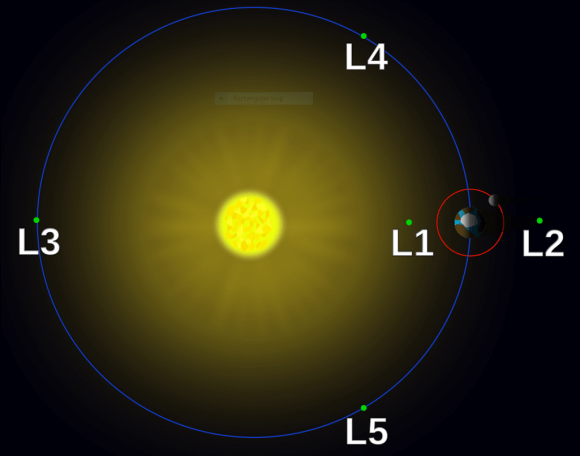
While the James Webb Space Telescope will be in operation much sooner than LUVOIR, and will also do amazing work, it will observe primarily in the infrared. LUVOIR, as its name makes clear, will have a wider range of observation more like Hubble’s. It will see in the Ultra-Violet spectrum, the Optical spectrum, and the Infrared spectrum.
Recently, Brad Peterson spoke with Fraser Cain on a weekly Space Hangout, where he outlined the plans for the LUVOIR. Brad is a recently retired Professor of Astronomy at the Ohio State University, where served as chair of the Astronomy Department for 9 years. He is currently the chair of the Science Committee at NASA’s Advisory Council. Peterson is also a Distinguished Visiting Astronomer at the Space Telescope Science Institute, and the chair of the astronomy section of the American Association for the Advancement of Science.
Different designs for LUVOIR have been discussed, but as Peterson points out in the interview above, the plan seems to have settled on a 15m segmented mirror. A 15m mirror is larger than any optical light telescope we have on Earth, though the Thirty Meter Telescope and others will soon be larger.
“Segmented telescopes are the technology of today when it comes to ground-based telescopes. The JWST has taken that technology into space, and the LUVOIR will take segmented design one step further,” Peterson said. But the segmented design of LUVOIR differs from the JWST in several ways.
“…the LUVOIR will take segmented design one step further.” – Brad Peterson
JWST’s mirrors are made of beryllium and coated with gold. LUVOIR doesn’t require the same exotic design. But it has other requirements that will push the envelope of segmented telescope design. LUVOIR will have a huge array of CCD sensors that will require an enormous amount of electrical power to operate.

LUVOIR will not be cryogenically cooled like the JWST is, because it’s not primarily an Infrared observatory. LUVOIR will also be designed to be serviceable. In fact, the US Congress now requires all space telescopes to be serviceable.
“Congress has mandated that all future large space telescopes must be serviceable if practicable.” – Brad Peterson
LUVOIR is designed to have a long life. It’s multiple instruments will be replaceable, and the hope is that it will last in space for 50 years. Whether it will be serviced by robots, or by astronauts, has not been determined. It may even be designed so that it could be brought back from L2 for servicing.
LUVOIR will contribute to the search for life on other worlds. A key requirement for LUVOIR is that it do spectroscopy on the atmospheres of distant planets. If you can do spectroscopy, then you can determine habitability, and, potentially, even if a planet is inhabited. This is the first main technological challenge for LUVOIR. This spectroscopy requires a powerful coronagraph to suppress the light of the stars that exoplanets orbit. LUVOIR’s coronagraph will excel at this, with a ratio of starlight suppression of 10 billion to 1. With this capability, LUVOIR should be able to do spectroscopy on the atmospheres of small, terrestrial exoplanets, rather than just larger gas giants.
“This telescope is going to be remarkable. The key science that it’s going to do be able to do is spectroscopy of planets in the habitable zone around nearby stars.” – Brad Peterson
This video from NASA’s Goddard Space Flight Center talks about the search for life, and how telescopes like LUVOIR will contribute to the search. At the 15:00 mark, Dr. Aki Roberge talks about how spectroscopy is key to finding signs of life on exoplanets, and how LUVOIR will take that search one step further.
Using spectroscopy to search for signs of life on exoplanets is just one of LUVOIR’s science goals.
LUVOIR is tasked with other challenges as well, including:
- Mapping the distribution of dark matter in the Universe.
- Isolating the source of gravitational waves.
- Imaging circumstellar disks to see how planets form.
- Identifying the first starlight in the Universe, studying early galaxies and finding the first black holes.
- Studying surface features of worlds in our Solar System.
To tackle all these challenges, LUVOIR will have to clear other technological hurdles. One of them is the requirement for long exposure times. This puts enormous constraints on the stability of the scope, since its mirror is so large. A system of active supports for the mirror segments will help with stability. This is a trait it shares with other terrestrial Super Telescopes like the Thirty Meter Telescope and the European Extremely Large Telescope. Each of those had hundreds of segments which have to be controlled precisely with computers.
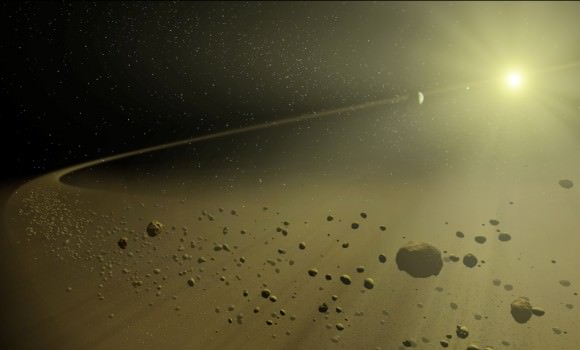
Credit: NASA
LUVOIR’s construction, and how it will be placed in orbit are also significant considerations.
According to Peterson, LUVOIR could be launched on either of the heavy lift rockets being developed. The Falcon Heavy is being considered, as is the Space Launch System. The SLS Block 1B could do it, depending on the final size of LUVOIR.
“I’s going to require a heavy lift vehicle.” – Brad Peterson
Or, LUVOIR may never be launched into space. It could be assembled in space with pre-built components that are launched one at a time, just like the International Space Station. There are several advantages to that.
With assembly in space, the telescope doesn’t have to be built to withstand the tremendous force it takes to launch something into orbit. It also allows for testing when completed, before being sent to L2. Once the ‘scope was assembled and tested, a small ion propulsion engine could be used to power it to L2.
It’s possible that the infrastructure to construct LUVOIR in space will exist in a decade or two. NASA’s Deep Space Gateway in cis-lunar space is planned for the mid-20s. It would act as a staging point for deep-space missions, and for missions to the lunar surface.
LUVOIR is still in the early stages. The people behind it are designing it to meet as many of the science goals as they can, all within the technological constraints of our time. Planning has to start somewhere, and the plans presented by Brad Peterson represent the current thinking behind LUVOIR. But there’s still a lot of work to do.
“Typical time scale from selection to launch of a flagship mission is something like 20 years.” – Brad Peterson
As Peterson explains, LUVOIR will have to be chosen as NASA’s highest priority during the 2020 Decadal Survey. Once that occurs, then a couple more years are required to really flesh out the design of the mission. According to Peterson, “Typical time scale from selection to launch of a flagship mission is something like 20 years.” That gets us to a potential launch in the mid-2030s.
Along the way, LUVOIR will be given a more suitable name. James Webb, Hubble, Kepler and others have all had important missions named after them. Perhaps its Carl Sagan’s turn.
“The Carl Sagan Space Telescope” has a nice ring to it, doesn’t it?
Rise of the Super Telescopes: The James Webb Space Telescope

We humans have an insatiable hunger to understand the Universe. As Carl Sagan said, “Understanding is Ecstasy.” But to understand the Universe, we need better and better ways to observe it. And that means one thing: big, huge, enormous telescopes.
In this series we’ll look at 6 of the world’s Super Telescopes:
- The Giant Magellan Telescope
- The Overwhelmingly Large Telescope
- The 30 Meter Telescope
- The European Extremely Large Telescope
- The Large Synoptic Survey Telescope
- The James Webb Space Telescope
- The Wide Field Infrared Survey Telescope
The James Webb Space Telescope
The James Webb Space Telescope“>James Webb Space Telescope (JWST, or the Webb) may be the most eagerly anticipated of the Super Telescopes. Maybe because it has endured a tortured path on its way to being built. Or maybe because it’s different than the other Super Telescopes, what with it being 1.5 million km (1 million miles) away from Earth once it’s operating.
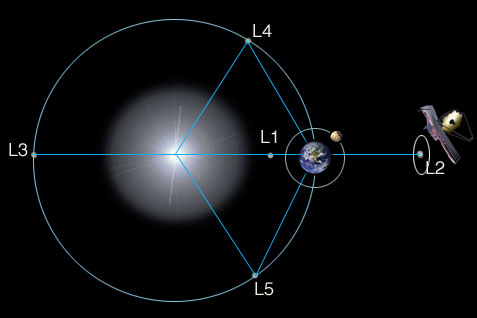
If you’ve been following the drama behind the Webb, you’ll know that cost overruns almost caused it to be cancelled. That would’ve been a real shame.
The JWST has been brewing since 1996, but has suffered some bumps along the road. That road and its bumps have been discussed elsewhere, so what follows is a brief rundown.
Initial estimates for the JWST were a $1.6 billion price tag and a launch date of 2011. But the costs ballooned, and there were other problems. This caused the House of Representatives in the US to move to cancel the project in 2011. However, later that same year, US Congress reversed the cancellation. Eventually, the final cost of the Webb came to $8.8 billion, with a launch date set for October, 2018. That means the JWST’s first light will be much sooner than the other Super Telescopes.
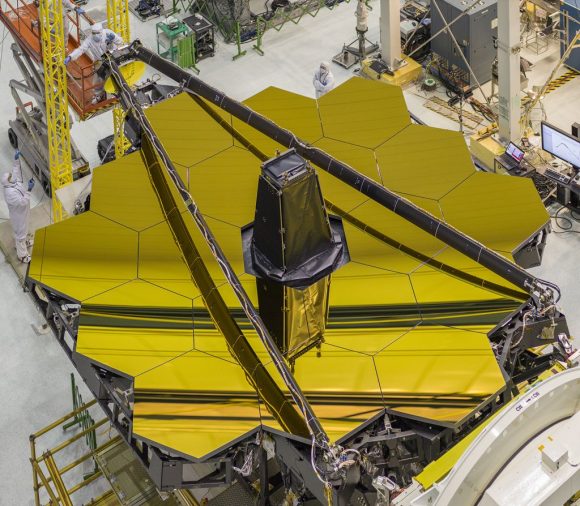
The Webb was envisioned as a successor to the Hubble Space Telescope, which has been in operation since 1990. But the Hubble is in Low Earth Orbit, and has a primary mirror of 2.4 meters. The JWST will be located in orbit at the LaGrange 2 point, and its primary mirror will be 6.5 meters. The Hubble observes in the near ultraviolet, visible, and near infrared spectra, while the Webb will observe in long-wavelength (orange-red) visible light, through near-infrared to the mid-infrared. This has some important implications for the science yielded by the Webb.
The Webb’s Instruments
The James Webb is built around four instruments:
- The Near-Infrared Camera (NIRCam)
- The Near-Infrared Spectrograph (NIRSpec)
- The Mid-Infrared Instrument(MIRI)
- The Fine Guidance Sensor/ Near InfraRed Imager and Slitless Spectrograph (FGS/NIRISS)
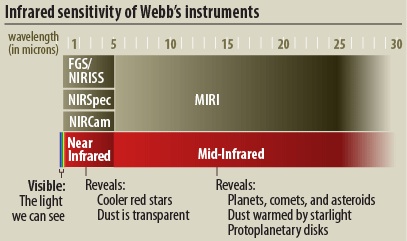
The NIRCam is Webb’s primary imager. It will observe the formation of the earliest stars and galaxies, the population of stars in nearby galaxies, Kuiper Belt Objects, and young stars in the Milky Way. NIRCam is equipped with coronagraphs, which block out the light from bright objects in order to observe dimmer objects nearby.
NIRSpec will operate in a range from 0 to 5 microns. Its spectrograph will split the light into a spectrum. The resulting spectrum tells us about an objects, temperature, mass, and chemical composition. NIRSpec will observe 100 objects at once.
MIRI is a camera and a spectrograph. It will see the redshifted light of distant galaxies, newly forming stars, objects in the Kuiper Belt, and faint comets. MIRI’s camera will provide wide-field, broadband imaging that will rank up there with the astonishing images that Hubble has given us a steady diet of. The spectrograph will provide physical details of the distant objects it will observe.
The Fine Guidance Sensor part of FGS/NIRISS will give the Webb the precision required to yield high-quality images. NIRISS is a specialized instrument operating in three modes. It will investigate first light detection, exoplanet detection and characterization, and exoplanet transit spectroscopy.
The Science
The over-arching goal of the JWST, along with many other telescopes, is to understand the Universe and our origins. The Webb will investigate four broad themes:
- First Light and Re-ionization: In the early stages of the Universe, there was no light. The Universe was opaque. Eventually, as it cooled, photons were able to travel more freely. Then, probably hundreds of millions of years after the Big Bang, the first light sources formed: stars. But we don’t know when, or what types of stars.
- How Galaxies Assemble: We’re accustomed to seeing stunning images of the grand spiral galaxies that exist in the Universe today. But galaxies weren’t always like that. Early galaxies were often small and clumpy. How did they form into the shapes we see today?
- The Birth of Stars and Protoplanetary Systems: The Webb’s keen eye will peer straight through clouds of dust that ‘scopes like the Hubble can’t see through. Those clouds of dust are where stars are forming, and their protoplanetary systems. What we see there will tell us a lot about the formation of our own Solar System, as well as shedding light on many other questions.
- Planets and the Origins of Life: We now know that exoplanets are common. We’ve found thousands of them orbiting all types of stars. But we still know very little about them, like how common atmospheres are, and if the building blocks of life are common.
These are all obviously fascinating topics. But in our current times, one of them stands out among the others: Planets and the Origins of Life.
The recent discovery the TRAPPIST 1 system has people excited about possibly discovering life in another solar system. TRAPPIST 1 has 7 terrestrial planets, and 3 of them are in the habitable zone. It was huge news in February 2017. The buzz is still palpable, and people are eagerly awaiting more news about the system. That’s where the JWST comes in.
One big question around the TRAPPIST system is “Do the planets have atmospheres?” The Webb can help us answer this.
The NIRSpec instrument on JWST will be able to detect any atmospheres around the planets. Maybe more importantly, it will be able to investigate the atmospheres, and tell us about their composition. We will know if the atmospheres, if they exist, contain greenhouse gases. The Webb may also detect chemicals like ozone and methane, which are biosignatures and can tell us if life might be present on those planets.
You could say that if the James Webb were able to detect atmospheres on the TRAPPIST 1 planets, and confirm the existence of biosignature chemicals there, it will have done its job already. Even if it stopped working after that. That’s probably far-fetched. But still, the possibility is there.
Launch and Deployment
The science that the JWST will provide is extremely intriguing. But we’re not there yet. There’s still the matter of JWST’s launch, and it’s tricky deployment.
The JWST’s primary mirror is much larger than the Hubble’s. It’s 6.5 meters in diameter, versus 2.4 meters for the Hubble. The Hubble was no problem launching, despite being as large as a school bus. It was placed inside a space shuttle, and deployed by the Canadarm in low earth orbit. That won’t work for the James Webb.
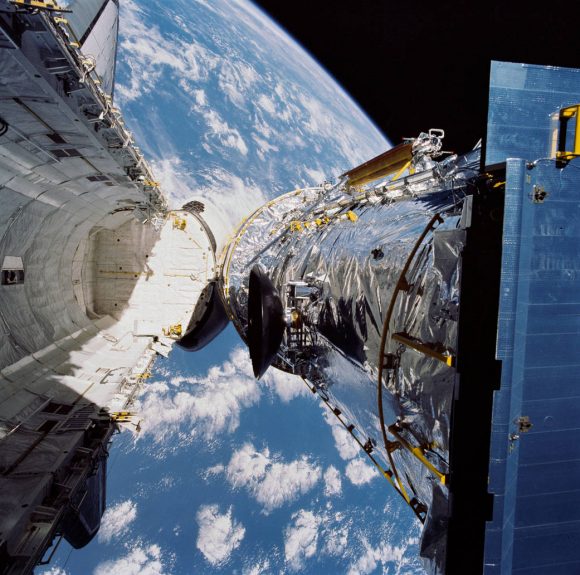
The Webb has to be launched aboard a rocket to be sent on its way to L2, it’s eventual home. And in order to be launched aboard its rocket, it has to fit into a cargo space in the rocket’s nose. That means it has to be folded up.
The mirror, which is made up of 18 segments, is folded into three inside the rocket, and unfolded on its way to L2. The antennae and the solar cells also need to unfold.
Unlike the Hubble, the Webb needs to be kept extremely cool to do its work. It has a cryo-cooler to help with that, but it also has an enormous sunshade. This sunshade is five layers, and very large.
We need all of these components to deploy for the Webb to do its thing. And nothing like this has been tried before.
The Webb’s launch is only 7 months away. That’s really close, considering the project almost got cancelled. There’s a cornucopia of science to be done once it’s working.
But we’re not there yet, and we’ll have to go through the nerve-wracking launch and deployment before we can really get excited.
100,000 Galaxies, and No Obvious Signs of Life
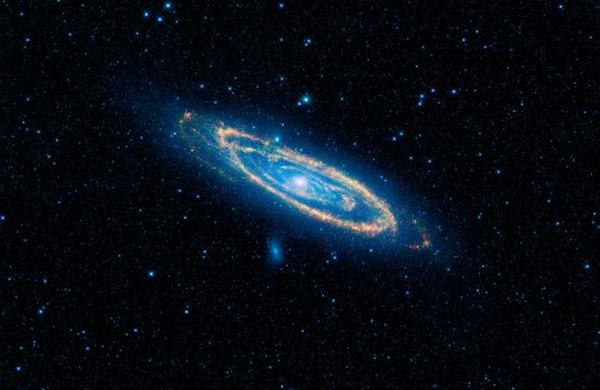
Beam us up, Scotty. There’s no signs of intelligent life out there. At least, no obvious signs, according to a recent survey performed by researchers at Penn State University. After reviewing data taken by the NASA Wide-field Infrared Survey Explorer (WISE) space telescope of over 100,000 galaxies, there appears to be little evidence that advanced, spacefaring civilizations exist in any of them.
First deployed in 2009, the WISE mission has been able to identify thousands of asteroids in our solar system and previously undiscovered star clusters in our galaxy. However, Jason T. Wright, an assistant professor of astronomy and astrophysics at the Center for Exoplanets and Habitable Worlds at Penn State University, conceived of and initiated a new field of research – using the infrared data to assist in the search for signs of extra-terrestrial civilizations.
And while their first look did not yield much in the way of results, it is an exciting new area of research and provides some very useful information on one of the greatest questions ever asked: are we alone in the universe?
“The idea behind our research is that, if an entire galaxy had been colonized by an advanced spacefaring civilization, the energy produced by that civilization’s technologies would be detectable in mid-infrared wavelengths,” said Wright, “exactly the radiation that the WISE satellite was designed to detect for other astronomical purposes.”
This logic is in keeping with the theories of Russian astronomer Nikolai Kardashev and theoretical physicist Freeman Dyson. In 1964, Kardashev proposed that a civilization’s level of technological advancement could be measured based on the amount of energy that civilization is able to utilize.
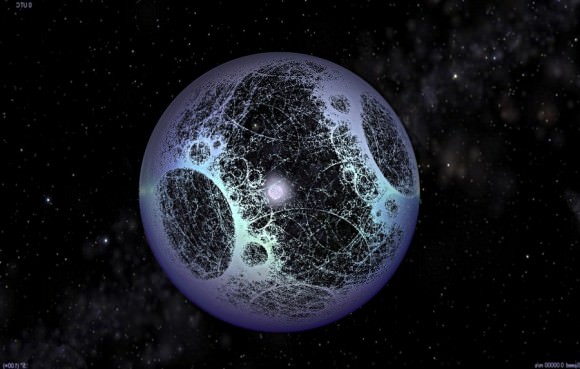
To characterize the level of extra-terrestrial development, Kardashev developed a three category system – Type I, II, and III civilizations – known as the “Kardashev Scale”. A Type I civilization uses all available resources on its home planet, while a Type II is able to harness all the energy of its star. Type III civilizations are those that are advanced enough to harness the energy of their entire galaxy.
Similarly, Dyson proposed in 1960 that advanced alien civilizations beyond Earth could be detected by the telltale evidence of their mid-infrared emissions. Believing that a sufficiently advanced civilization would be able to enclose their parent star, he believed it would be possible to search for extraterrestrials by looking for large objects radiating in the infrared range of the electromagnetic spectrum.
These thoughts were expressed in a short paper submitted to the journal Science, entitled “Search for Artificial Stellar Sources of Infrared Radiation“. In it, Dyson proposed that an advanced species would use artificial structures – now referred to as “Dyson Spheres” (though he used the term “shell” in his paper) – to intercept electromagnetic radiation with wavelengths from visible light downwards and radiating waste heat outwards as infrared radiation.
“Whether an advanced spacefaring civilization uses the large amounts of energy from its galaxy’s stars to power computers, space flight, communication, or something we can’t yet imagine, fundamental thermodynamics tells us that this energy must be radiated away as heat in the mid-infrared wavelengths,” said Wright. “This same basic physics causes your computer to radiate heat while it is turned on.”
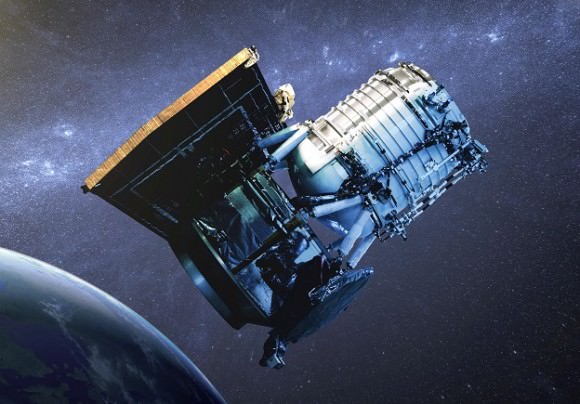
However, it was not until space-based telescopes like WISE were deployed that it became possible to make sensitive measurements of this radiation. WISE is one of three infrared missions currently in space, the other two being NASA’s Spitzer Space Telescope and the Herschel Space Observatory – a European Space Agency mission with important NASA participation.
WISE is different from these missions in that it surveys the entire sky and is designed to cast a net wide enough to catch all sorts of previously unseen cosmic interests. And there are few things more interesting than the prospect of advanced alien civilizations!
To search for them, Roger Griffith – a postbaccalaureate researcher at Penn State and the lead author of the paper – and colleagues scoured the entries in the WISE satellites database looking for evidence of a galaxy that was emitting too much mid-infrared radiation. He and his team then individually examined and categorized 100,000 of the most promising galaxy images.
And while they didn’t find any obvious signs of a Type II civilization or Dyson Spheres in any of them, they did find around 50 candidates that showed unusually high levels of mid-infrared radiation. The next step will be to confirm whether or not these signs are due to natural astronomical processes, or could be an indication of a highly advanced civilization tapping their parent star for energy.
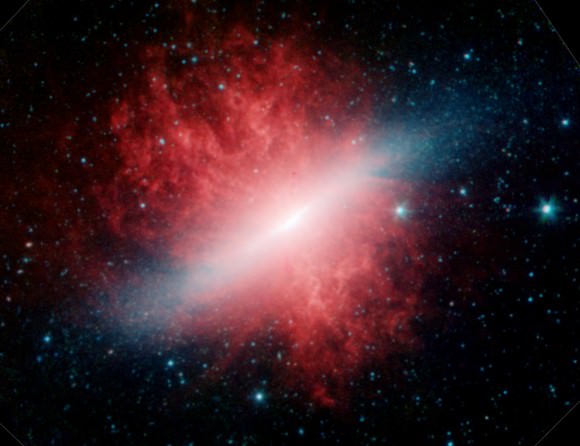
In any case, the team’s findings were quite interesting and broke new ground in what is sure to be an ongoing area of research. The only previous study, according to the G-HAT team, surveyed only about 100 galaxies, and was unable to examine them in the infrared to see how much heat they emitted. What’s more, the research may help shed some light on the burning questions about the very existence of intelligent, extra-terrestrial life in our universe.
“Our results mean that, out of the 100,000 galaxies that WISE could see in sufficient detail, none of them is widely populated by an alien civilization using most of the starlight in its galaxy for its own purposes,” said Wright. “That’s interesting because these galaxies are billions of years old, which should have been plenty of time for them to have been filled with alien civilizations, if they exist. Either they don’t exist, or they don’t yet use enough energy for us to recognize them.”
Alas, it seems we are no closer to resolving the Fermi Paradox. But for the first time, it seems that investigations into the matter are moving beyond theoretical arguments. And given time, and further refinements in our detection methods, who knows what we might find lurking out there? The universe is very, very big place, after all.
The research team’s first research paper about their Glimpsing Heat from Alien Technologies Survey (G-HAT) survey appeared in the Astrophysical Journal Supplement Series on April 15, 2015.
Further Reading: Astrophysical Journal via EurekAlert, JPL-NASA
Astronomy Cast Ep. 329: Telescope Making, Part 3: Space Telescopes
As we’ve said before, all telescopes really want to be in space. In part 3 of our series on amateur telescope making, we bring you up to speed on the final frontier: amateurs building space telescopes. The hardware and software is available off the shelf, and launches have never been more affordable. The era of amateur space telescopes has arrived.
Continue reading “Astronomy Cast Ep. 329: Telescope Making, Part 3: Space Telescopes”


